Step Inside Alum José Luis Vílchez’s Magic School Bus
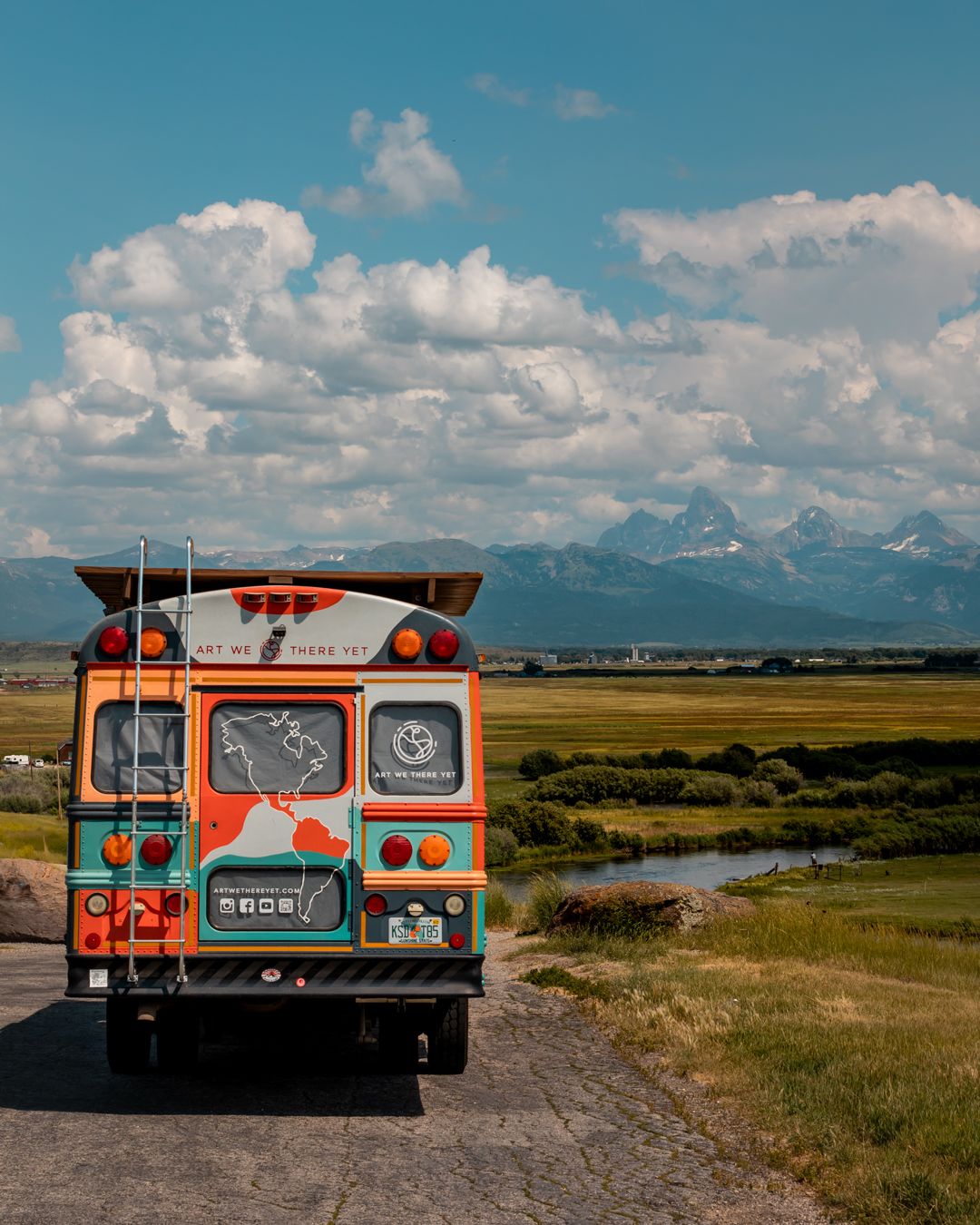
Photo courtesy of Art We There Yet
Photo courtesy of Art We There Yet
by Rowan Beaird
José Luis Vílchez (MFA 2015) and Cora Rose met on the other side of the world.
Rose was born in rural Wisconsin and Vílchez in Nicaragua, but in 2016 they were both living in Guangzhou, China. Rose was teaching English. Vílchez was working at Lido Art Center, which he co-founded after graduating from the School of the Art Institute of Chicago (SAIC). “We joke that it took moving across the whole world to get close enough to have each other show up on the OkCupid dating app,” Rose said.
They didn’t stand still for long. As their relationship grew, Vílchez shared a dream that he’d been harboring: to drive a school bus across the Americas, making art and giving back to local communities along the way. With her own passion for arts and education, Rose didn’t take much convincing. In 2018, their project Art We There Yet was born, and after a year of fundraising and project planning, they purchased a bright-yellow school bus and began the transformation process.
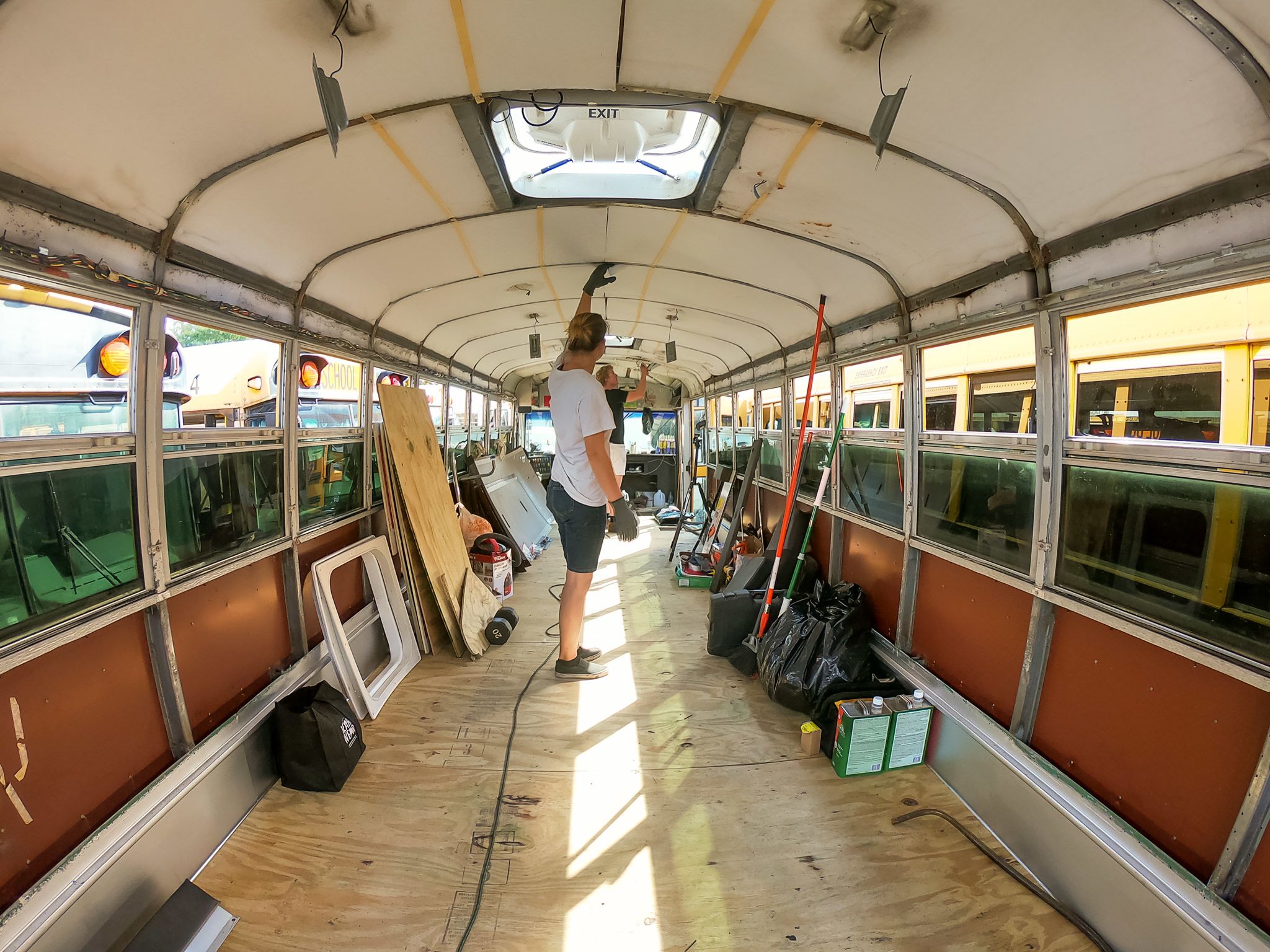
The bus in progress. Image courtesy of Art We There Yet
The bus in progress. Image courtesy of Art We There Yet
Art and travel have always been important to Vílchez and Rose’s lives. “I started writing songs when I was seven,” Rose shared. “And then, by 12, I started doing concerts. I recorded my first album at 15.” When he was young, Vílchez played music and spent hours sketching Bugs Bunny and Mickey Mouse. As both got older, art pulled them outside of their small towns, for performances and for school, igniting a passion for adventure and discovery.
“My love for travel and art goes hand in hand,” Vílchez shared. “They feed off each other.” When he was young, a volunteer group traveled to his town in Nicaragua and gave Vílchez his first musical instrument, a gift that changed his life. “So, the idea of having a mobile studio and becoming part of communities, or even building communities, was something that I wanted to do.”
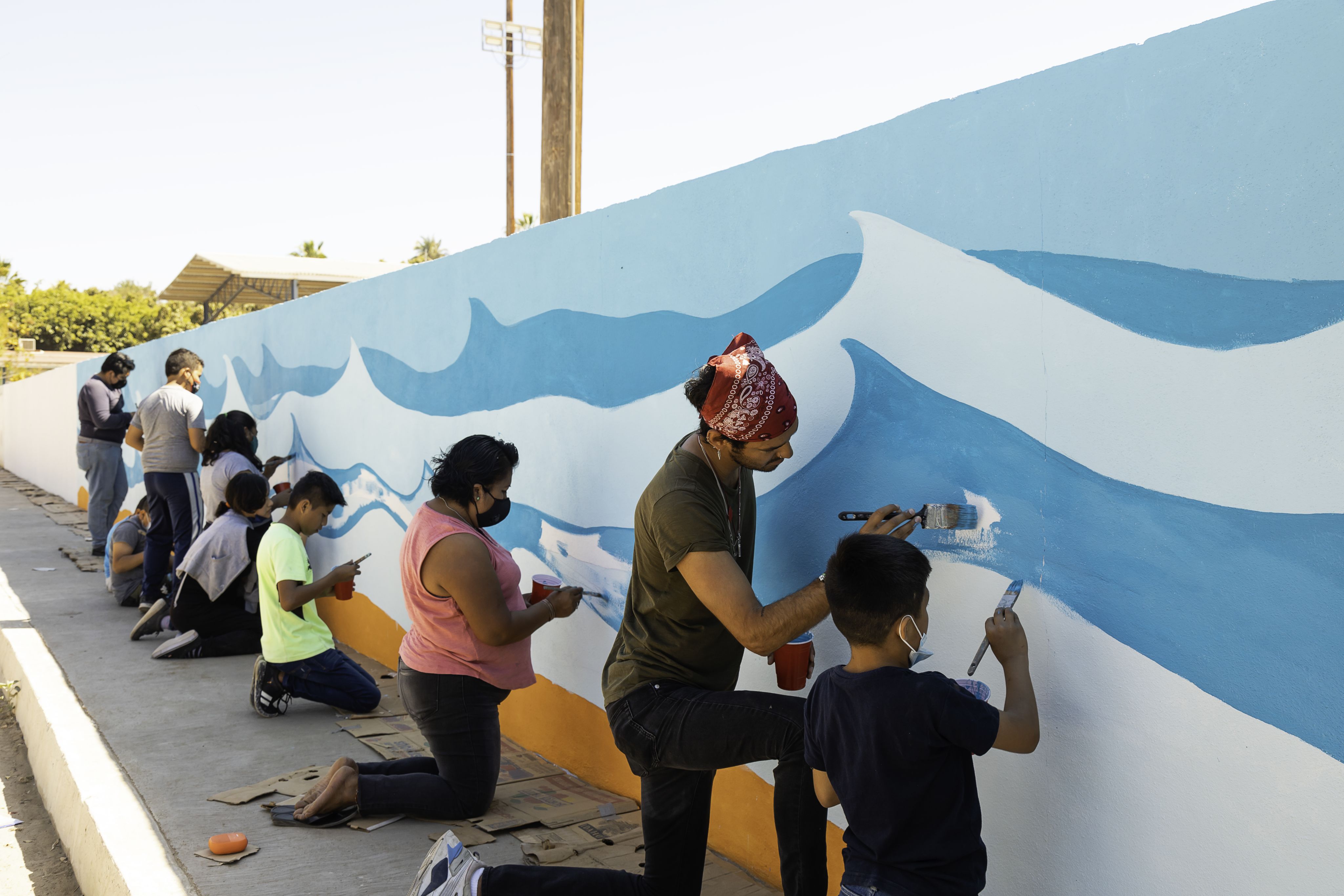
A community-based mural in progress. Image courtesy of Art We There Yet
A community-based mural in progress. Image courtesy of Art We There Yet
The entire venture took a huge leap of faith. By the time they pulled the bus out of the parking lot, they had just a few hundred dollars in their bank account and a vague route of how to traverse North and South America. “We just hit the road, going, We’re gonna see how this works,” Rose said.
Two years, 18,000 miles, four bus breakdowns, and one engine rebuild later, they’ve accomplished remarkable things. Through funding from patrons, their own pocket, and eventually art project commissions, they’ve hosted 20 free arts workshops; produced countless recordings, photographs, and videos; and collaborated on 18 murals with local communities. “Our logistic process of connecting with communities is a very, very generative and organic process,” Rose shared. “There’s nothing subtle about the bus. You just show up and people start knocking on the doors.”
“It’s been a really beautiful thing for us to see that everybody, no matter their political stance, has been on the same page in the opinion that art is important.”
This means that Rose and Vílchez have learned not to have a set route or timetable. After a tire blowout in the Tetons, they had to cross state lines to Idaho to get their bus repaired. While there, they were invited to visit the small town of Driggs. “This led to four murals, a whole summer of me being able to play music, during the pandemic, outside in outdoor spaces. So, this huge, beautiful experience in this town, and this community, blossomed,” Rose said.

Cora Rose teaching local children during a community workshop. Image courtesy of Art We There Yet
Cora Rose teaching local children during a community workshop. Image courtesy of Art We There Yet
Music and murals are often what bring Rose and Vílchez the most joy. Though being on the road has led Vílchez to discover a deep love of photography and videography, the murals allow him to stay connected to his practice as a painter and connect with local communities. “We have people who live in the same town, they never knew each other. And they hit it off and now they’re best friends. I’m so happy that they met over a wall that they were painting,” Vílchez said.
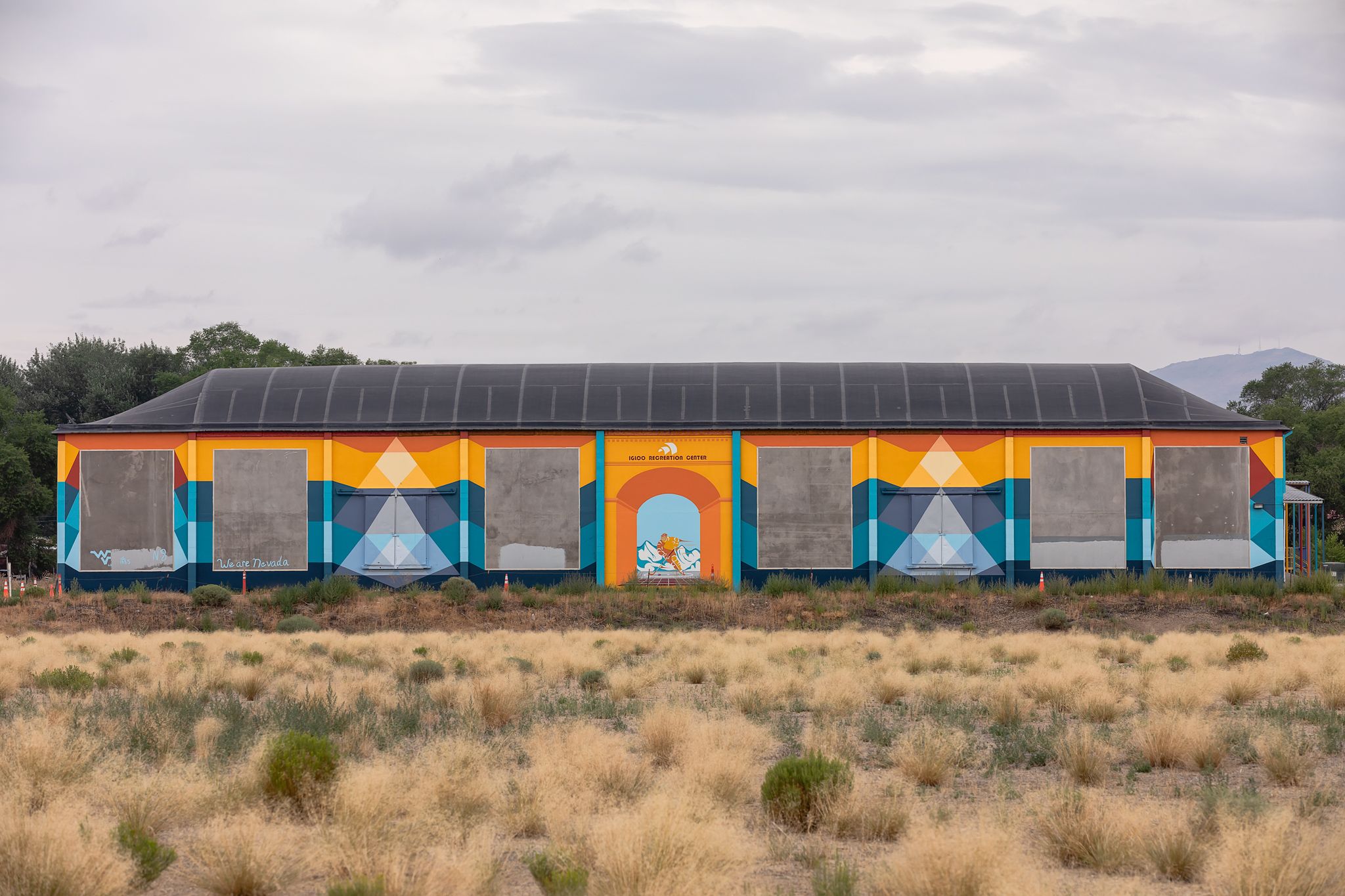
A community-based mural in Elko, Nevada. Image courtesy of Art We There Yet
A community-based mural in Elko, Nevada. Image courtesy of Art We There Yet
Through painting and singing alongside strangers, Vílchez and Rose are reminded of art’s ability to bring people together. “I believe that we are all artists,” Vílchez shared. “And I see that over and over again when volunteers that never had a brush in their hands start painting. I think it’s that satisfaction of creation.” Even during the pandemic and a presidential election, they’ve never struggled to facilitate connections. “It’s been a really beautiful thing for us to see that everybody, no matter their political stance, has been on the same page in the opinion that art is important,” Rose said.
Nearly four years since their first conversation about the project, Rose and Vílchez’s vision has only expanded. At first, they imagined being on the road for two years, but now their timeline is much looser. “To do this kind of work and to do it well, it’s gonna take a lot more time than we thought,” Rose said. They already have people reaching out to them about murals they want painted in Buenos Aires. “We’re always so thankful for everyone who has supported us,” Vílchez said. “The success of this wouldn’t be possible without so many others.”
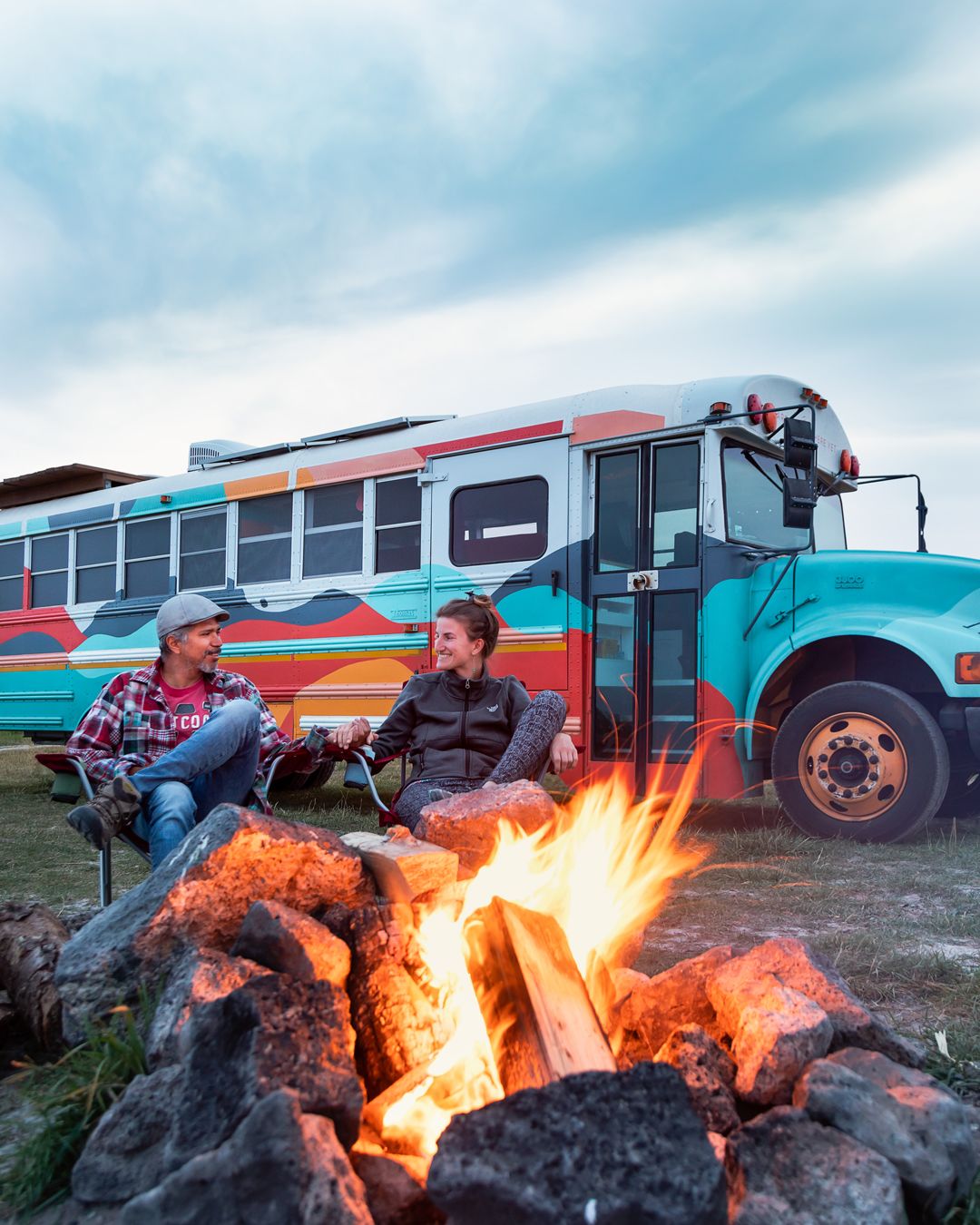
José Luis Vílchez and Cora Rose. Image courtesy of Art We There Yet
José Luis Vílchez and Cora Rose. Image courtesy of Art We There Yet
They’re planning on spending the winter in Cape Cod and then continuing their journey to Alaska, a destination that has been unreachable until now due to the pandemic. From there, the road will always lead south. But no matter where they are, Vílchez shares that they feel grounded in their purpose. “The bus has actually become home.” ■
You can follow along on Vílchez and Rose’s journey on Instagram, Facebook, or YouTube.
{{[http://www.saic.edu/news/alums]ALUMS}} {{[http://www.saic.edu/news/artconnectsus]ART CONNECTS US}}
